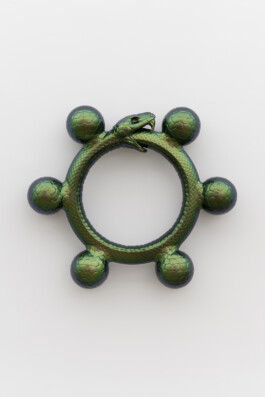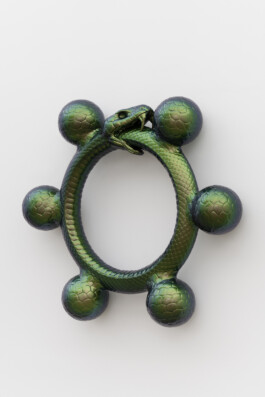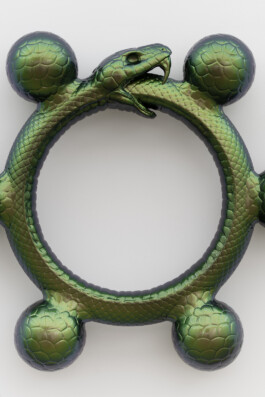




In the mid-19th century, the German chemist Friedrich August Kekulé struggled with the puzzle of benzene’s molecular structure. Legend tells that in 1861, while dozing by his fireplace, he dreamt of a snake biting its own tail—a vision of the ancient ouroboros. From this dream, he realized that benzene’s six carbon atoms must form a closed ring, a breakthrough that became the foundation of modern organic chemistry and spurred the vast expansion of the chemical and petrochemical industries, from plastics to fuels. Yet this dream of a self-devouring snake carries a double edge: while it enabled enormous scientific and industrial progress, it also set humanity on a path deeply entwined with fossil fuels and environmental risk. Ouroboros meditates on such legacies, transforming symbols of oil and petro-culture into strange, luminous forms that reveal both their allure and their menace. In this context, Kekulé’s dream can be read not only as the birth of a scientific revolution but also as a prophecy of cyclical self-destruction, echoing today in the climate crisis where the very industry it unleashed threatens to consume the world that sustains it.





In the mid-19th century, the German chemist Friedrich August Kekulé struggled with the puzzle of benzene’s molecular structure. Legend tells that in 1861, while dozing by his fireplace, he dreamt of a snake biting its own tail—a vision of the ancient ouroboros. From this dream, he realized that benzene’s six carbon atoms must form a closed ring, a breakthrough that became the foundation of modern organic chemistry and spurred the vast expansion of the chemical and petrochemical industries, from plastics to fuels. Yet this dream of a self-devouring snake carries a double edge: while it enabled enormous scientific and industrial progress, it also set humanity on a path deeply entwined with fossil fuels and environmental risk. Ouroboros meditates on such legacies, transforming symbols of oil and petro-culture into strange, luminous forms that reveal both their allure and their menace. In this context, Kekulé’s dream can be read not only as the birth of a scientific revolution but also as a prophecy of cyclical self-destruction, echoing today in the climate crisis where the very industry it unleashed threatens to consume the world that sustains it.